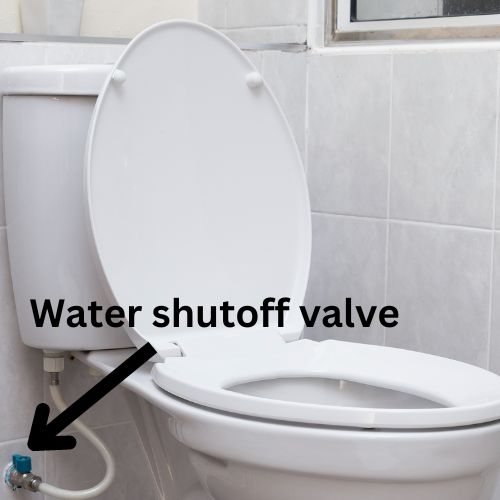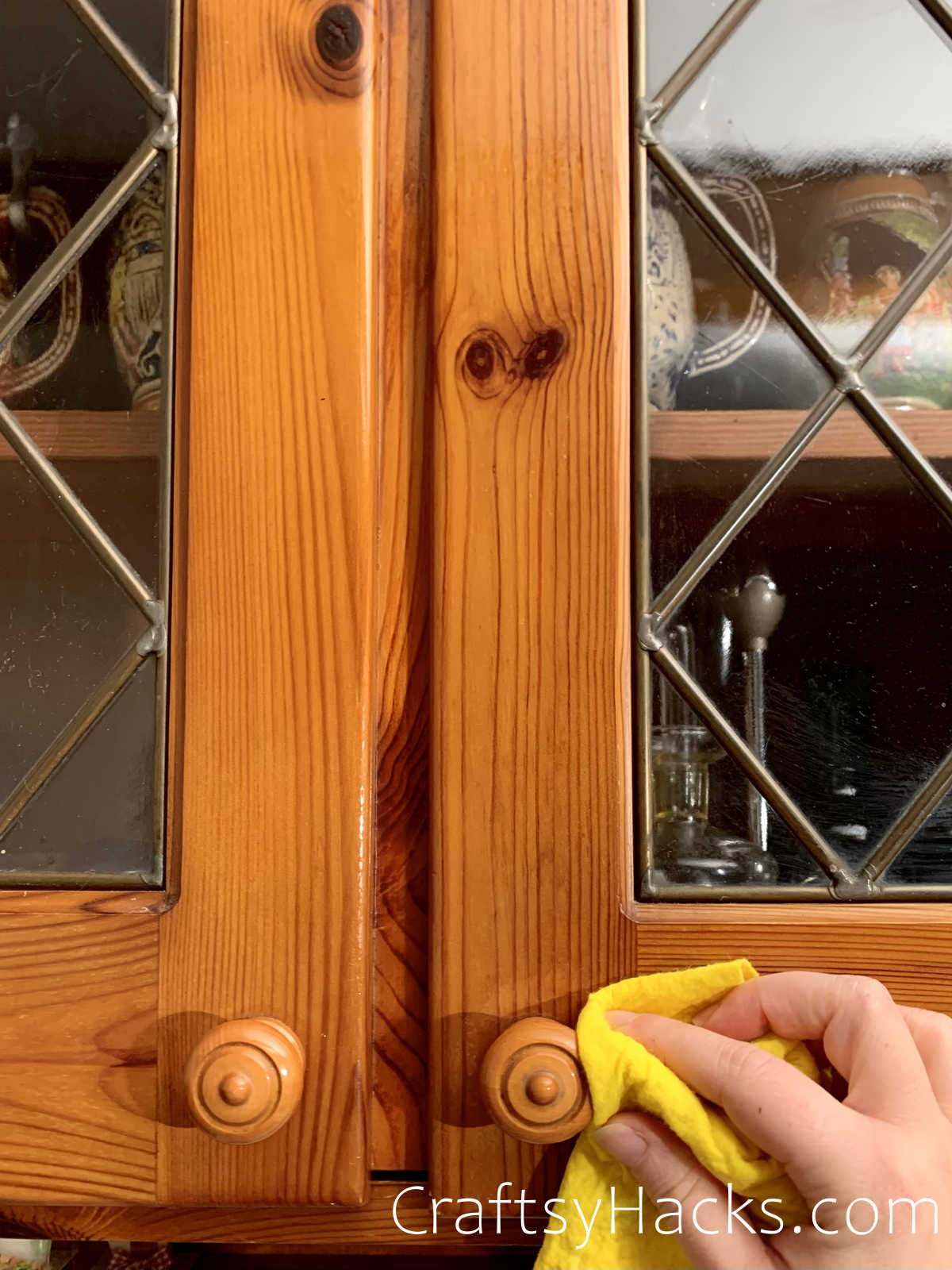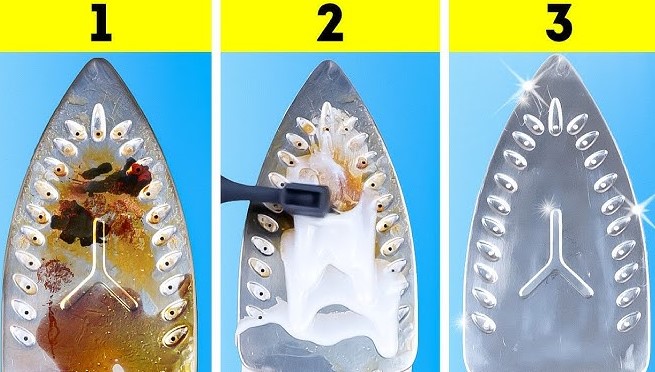Quick and Easy Tips to Remove Rust Stains From Toilet Bowls
When you have hard water, rust stains in toilet bowls are a common eyesore that can be frustrating and downright embarrassing. Scrubbing away at the stains can feel like an endless battle that you just can’t seem to win. But once you understand what causes hard water stains and streaks in your toilet, you will find it isn’t so hard to get rust stains out of toilet bowls.
In this article, I’ll share some of the proven methods and useful tips that I’ve discovered to easily remove those stubborn orange stains from your toilet bowl. Amazingly, I have found that simple household items may be all you need to remove those dark stains for good. So, let’s go over the best and most efficient ways to get your toilet bowl shining and spotless once again.
What Causes Rust Stains in Toilet Bowls?
I’ve been living in homes that depend on wells for over 20 years. I’ve spent a lot of time figuring out ways to get rid of that limescale and black in toilet bowls so I could get rid of the stubborn stains.
The main reason for rust toilet bowl stains is hard water that contains iron and other minerals like calcium and limescale. When the iron in the water comes into contact with oxygen in the air, it forms iron oxide, also known as rust.
As water flows, the rust accumulates on the porcelain surface of the toilet bowl, and you end up with those annoying brown stains in bottom of toilet bowl. Additionally, limescale is formed from minerals in the water when hard water evaporates, and can cause a dark ring around your toilet bowl and underneath the rim.
Another factor contributing to brown scale in toilet bowls could be the iron plumbing pipes in your home. Older plumbing systems often used iron pipes, which eventually corrode and release trace amounts of iron into the water supply. So, even if you’re not dealing with hard water, the iron from your pipes might still be causing those difficult-to-remove stains.
How to Remove Rust Stains with Common Household Items
Here’s a little science lesson – using an acid on rust dissolves (or neutralizes) the oxide and results in a water-soluble salt that can be easily wiped away. Many common household items are mild acids that can be used to remove rust stains effectively.
Citric Acid
Citric acid is my preferred rust remover. It’s found naturally in citrus fruits and is a common ingredient in many cleaning products. Citric acid is widely available in a powdered form and is excellent at removing stubborn rust. Just mix the powder with some water to make a paste, apply it to the rust-stained area, and let it sit for a while before scrubbing and rinsing.
White Vinegar
Vinegar contains acetic acid and is a natural cleaning agent that is another way to remove rust stains. Simply pour some vinegar into the toilet bowl, let it sit for a while, and then use a toilet brush to scrub away the stains. If you need something a bit more powerful, you can use cleaning vinegar which contains a higher percentage of acetic acid.
Lemon Juice
Another handy ingredient commonly found in your home is lemon juice. Its natural acidity makes it an excellent option for removing smaller rust stains. Just squeeze some lemon juice directly onto the stained area, let it sit for a few minutes, and then scrub it with a brush. You can also add some salt to the lemon juice to create a paste, which can make the cleaning process even more effective.
Dark Soft Drinks
Coke, Pepsi, and many other dark soft drinks use phosphoric acid for flavor and to extend shelf life and can also be used to clean rust stains in your toilet bowl. The phosphoric acid present in the soda is capable of dissolving rust stains. Just pour a can of Coke into your toilet bowl, let it sit for a while, and then scrub away.
Muriatic Acid
If you have a pool, you likely have some muriatic acid around the house. Muriatic acid is a form of hydrochloric acid and is very effective on hard water stains and rust in your toilet. You can pour it into your toilet bowl and let it sit to quickly dissolve rust and hard water deposits. Note that it is an extremely powerful and concentrated acid so open all windows, and wear goggles, a mask, and gloves because it can burn your skin. Also, take care to protect natural stone surfaces in your bathroom like marble because it will etch and discolor them.
WD-40
Odd as it may sound, WD-40 can help remove rust stains! Its lubricating qualities loosen the bonds between the rust and the surface it has adhered to. It doesn’t technically dissolve the rust, but it provides a means for the rusty oxide to slide away from where it was built up. Just spray a bit of it onto the stained area, let it sit for a few minutes, and then scrub with a brush. This method is recommended for smaller spot treating of toilet rust stains.
Pumice Stone
If you are dealing with a very thick layer of rust or mineral buildup, a pumice stone can also be very helpful when it comes to tackling rust stains. A pumice stone is a porous volcanic rock formed when lava cools during an eruption.
Wet the stone and gently scrub the stained area. The abrasive nature of the pumice stone will help remove the rust, but be careful to keep the stone wet in order to not scratch your toilet bowl.
These are the common household items that I have personally found effective in removing rust stains from my toilet bowl. Give them a try and see which one works best for you!
Step-by-Step Guide to Remove Stains from Rusty Toilet Bowls
If your toilet only has minor staining, spot cleaning may be all you need using one of the methods above. However, if the entire bowl is stained, here’s a step-by-step guide to get rid of rust stains in the toilet.
Supplies you’ll need:
Step 1: Empty the toilet bowl

Shut the water off and flush to empty the tank. Use a toilet plunger to push the last traces of water out of the bowl.
Step 2: Block the toilet drain
Fill a sturdy plastic bag with enough water to completely block the toilet drain. Tie a string on the top of the bag so you can pull it out later. Wedge the bag into the opening, beginning with the corner, and shape the bag as needed to completely block the drain.
Step 3: Prepare your cleaning acid
- Citric acid: Add 1.5 cups of citric acid powder to one bucket of hot water. Stir until dissolved.
- White Vinegar: Vinegar can be used without diluting. For faster results, heat the vinegar first.
- Muriatic Acid: Always add muriatic acid to water, never add water to the acid. Add 1.5 cups of muriatic acid to a bucket of cold water. It’s safer to do this outside, and make sure to follow the safety instructions on the bottle – use it in a well-ventilated room while wearing gloves, safety glasses, and a mask.
- Dark Cola: Have 2-3 large bottles of cola ready to pour.
Step 4: Add your cleaning acid
Fill the bowl very slowly with your cleaning acid solution right up to the rim. Let it sit for a minimum of 30 minutes to allow time for the acid to dissolve the rust deposits. If using muriatic acid, make sure the room is well-ventilated, windows are open and keep the door closed.
Step 5: Scrub away the rust stains
Using a scrub brush and/or a pumice stone, thoroughly scrub the toilet bowl, focusing on the rust-stained areas. If the stains are particularly stubborn, continue to let the solution sit for another 10-15 minutes before scrubbing again. For very large, thick mineral deposits and rust stains, leave it overnight if you can. If you have staining on the rim jets, use a thin brush cleaner to get into the nooks and crannies.
Step 6: Turn the water back on and unblock the drain
Turn the water back on and remove the water-filled bag. The process of pulling the bag out of the drain may cause the toilet to flush. If not, let the tank fill then flush the cleaning solution out of the bowl a couple of times until the bowl is filled with fresh water.
That is my go-to guide for removing rust stains from a toilet bowl. Just follow these steps, and you’ll have a rust-free, sparkling-clean bowl in no time!




